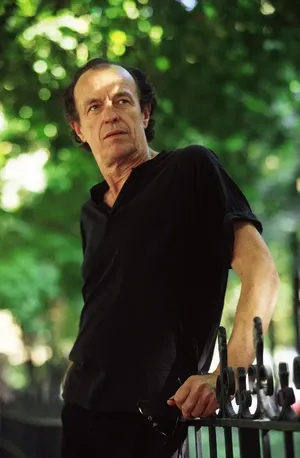Питер Даунсбро (1940–2024)

Концептуальный художник, фотограф и режиссер Питер Даунсбро, чьи сдержанные и выразительные работы сочетали архитектуру и типографику, взаимодействуя с пространством и кардинально его изменяя, скончался 10 августа в Брюсселе, где он жил с 1989 года. Ему было восемьдесят четыре года. О его смерти объявила галерея Краков-Уиткин в Бостоне, которая представляла его. «Работы Даунсбро — это маркеры, которые определяют пересечения между условиями и опытом их создания и восприятия», — написала куратор Энн Голдстейн в книге «Переосмысление объекта искусства: 1965–1975». «Вместо того, чтобы описывать ситуацию, они конкретизируют, фрагментируют и вмешиваются в процесс и условия представления. Они не описывают место, а условия места.»
Питер Даунсбро родился в 1940 году в Нью-Брансуике, Нью-Джерси. Сначала изучая архитектуру в колледже, он покинул эту область, чтобы стать скульптором. Его перваяsolo-выставка прошла в Нью-Йорке, в галерее Area, в 1961 году, и он продолжал работать в этом жанре до конца 1960-х годов, когда, как лаконично заметила Маргарет Санделл в выпуске Artforum за 2003 год, он «отказался от производства традиционных художественных объектов в пользу феноменологического исследования пространства через фотографию, специфические для места интервенции, книги художников, а также аудио произведения и CD-ROM.»
Характерными для его ново разнообразной практики — которая также включала коллажи, видео, карты, масштабные модели и типографический дизайн — стали работы, которые заставляли зрителей переосмысливать своё положение, чтобы понять их. Многие из этих работ, требующих этого, содержали буквы, расположенные таким образом, что они образовывали слова, если на них смотреть с определенных углов. Другие работы, такие как пространственные интервенции с параллельными шипами или отрезками трубы, приглашали зрителей пересмотреть само пространство. Эти параллельные линии появлялись в других форматах, включая его книги художника, где их позиционирование, страница за страницей, казалось, не подчинялось никакой конкретной логике и, таким образом, призывало к декодированию, а
s в его работе 2009 года "Две линии, три раздела". Как художник кино и видео, Даунсбро стал последователем аналогичной минималистской эстетики, что ярко выражено в таких работах, как "Теперь с тремя частями" 1983 года, суровое восхваление простого действия броска кубиков; и "Здесь" 2004 года, использующее черно-белые сетки городской архитектуры для исследования социальных и governmental ловцов. Несмотря на то что он оставил практику архитектуры, его по-прежнему fascinat城市空间, который он структурировал в своих фильмах и видео подобным образом, как и его вышеупомянутые интервенции, призывая к пересмотру пространства и структуры. Работы Даунсбро хранятся в коллекциях крупных художественных институтов мира, в том числе в Музее современного искусства в Нью-Йорке; Библиотеке Тейт в Лондоне; Музее современного и современного искусства в Женеве; Центре Помпиду и Национальном фонде современного искусства, оба в Париже; Le Consortium, Центр современного искусства, в Дижоне, Франция; FRAC Lorraine, Мец, Франция; SMAK, Стеделейк музее современного искусства, Гент, Бельгия; Weserburg музей современного искусства, Бремен, Германия; Museu d’Art Contemporani, Барселона; и Muzeum Sztuki, Лодзь, Польша. "Иногда люди говорят: 'Ну, ты часть минималистского движения', - рассказал он Radio Web MACBA в 2019 году. 'Но я всегда говорю: нет, я не минималист, я максималист. Я не могу делать больше, чем делаю', - заключил он. 'Я делаю максимум.'"